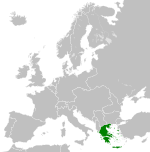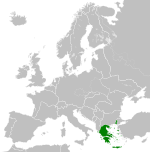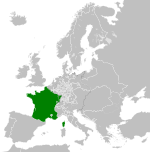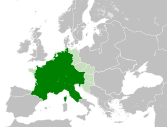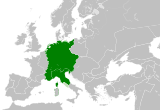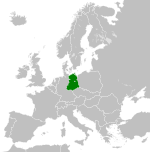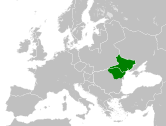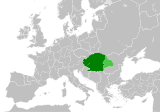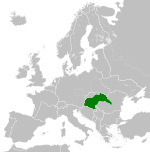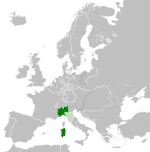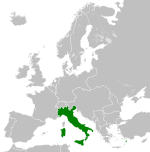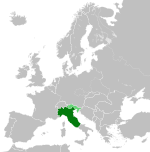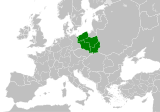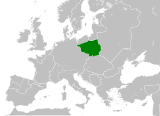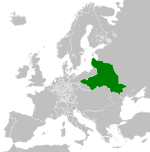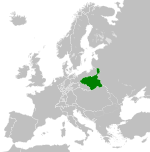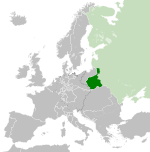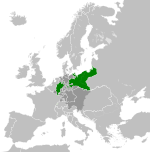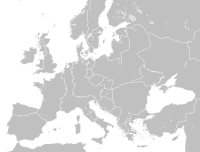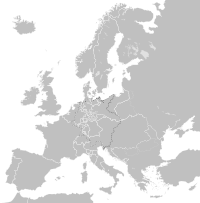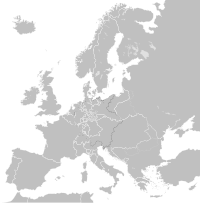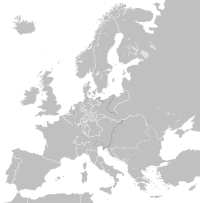File:Maps of Yugoslavia and FR Yugoslavia.svg

Original file (SVG file, nominally 450 × 780 pixels, file size: 1.06 MB)
| This is a file from the Wikimedia Commons. Information from its description page there is shown below. Commons is a freely licensed media file repository. You can help. |
Summary
Licensing
- You are free:
- to share – to copy, distribute and transmit the work
- to remix – to adapt the work
- Under the following conditions:
- attribution – You must give appropriate credit, provide a link to the license, and indicate if changes were made. You may do so in any reasonable manner, but not in any way that suggests the licensor endorses you or your use.
- share alike – If you remix, transform, or build upon the material, you must distribute your contributions under the same or compatible license as the original.
Captions
Items portrayed in this file
depicts
25 March 2013
File history
Click on a date/time to view the file as it appeared at that time.
| Date/Time | Thumbnail | Dimensions | User | Comment | |
|---|---|---|---|---|---|
| current | 15:01, 25 September 2022 |  | 450 × 780 (1.06 MB) | Vipz | Kaliningrad Oblast was missing in the third section, copy-pasted it from File:Blank map of Europe (with disputed regions).svg. |
| 17:41, 22 May 2016 |  | 450 × 780 (1.06 MB) | Alphathon | I missed one. Also updated metadata | |
| 17:30, 22 May 2016 |  | 450 × 780 (1.06 MB) | Alphathon | SVG should now be valid | |
| 10:05, 12 August 2013 |  | 450 × 780 (1.06 MB) | Alphathon | Fixed pre-1941 Hungarian border | |
| 13:16, 10 April 2013 |  | 450 × 780 (1.06 MB) | Alphathon | Re-did 1992-2003 map using File:Blank_map_of_Europe.svg (for consistency with the other two if nothing else). Re-added Turkey to the 1945-1992 map. | |
| 15:17, 25 March 2013 |  | 450 × 780 (1.19 MB) | NikNaks | User created page with UploadWizard |
File usage
Global file usage
The following other wikis use this file:
- Usage on af.wikipedia.org
- Usage on als.wikipedia.org
- Usage on ar.wikipedia.org
- Usage on az.wikipedia.org
- Usage on bg.wikipedia.org
- Usage on br.wikipedia.org
- Usage on bs.wikipedia.org
- Usage on ca.wikipedia.org
- Usage on cs.wikipedia.org
- Usage on cu.wikipedia.org
- Usage on de.wikipedia.org
- Usage on en.wiktionary.org
- Usage on fr.wikipedia.org
- Usage on fr.wiktionary.org
- Usage on fy.wikipedia.org
- Usage on he.wikipedia.org
- Usage on hr.wikipedia.org
- Usage on it.wikipedia.org
- Usage on ja.wikipedia.org
- Usage on ku.wiktionary.org
- Usage on kw.wikipedia.org
- Usage on ky.wikipedia.org
- Usage on lij.wikipedia.org
- Usage on lv.wikipedia.org
- Usage on mg.wikipedia.org
- Usage on mn.wikipedia.org
- Usage on nl.wikipedia.org
- Usage on nn.wikipedia.org
- Usage on pt.wikiquote.org
- Usage on rm.wikipedia.org
- Usage on rue.wikipedia.org
- Usage on ru.wikipedia.org
- Usage on sh.wikipedia.org
- Usage on sl.wikipedia.org
- Usage on tr.wikipedia.org
- Usage on vep.wikipedia.org
- Usage on vi.wikipedia.org
- Usage on vls.wikipedia.org
- Usage on war.wikipedia.org
- Usage on xmf.wikipedia.org
- Usage on zh.wikipedia.org
- Usage on zh.wiktionary.org
Metadata
This file contains additional information, probably added from the digital camera or scanner used to create or digitize it.
If the file has been modified from its original state, some details may not fully reflect the modified file.
| Short title | Yugoslavia |
|---|---|
| Image title | Maps showing the evolution of Yugoslavia.
Original version created by Wikimedia Commons user NikNaks (https://commons.wikimedia.org/wiki/User:NikNaks) based on the files https://commons.wikimedia.org/wiki/File:Blank_map_of_Europe_1929-1938.svg (by Wikimedia Commons user Alphathon https://commons.wikimedia.org/wiki/User:Alphathon), https://commons.wikimedia.org/wiki/File:Blank_map_of_Europe_1956-1990.svg (by Wikimedia Commons user Alphathon https://commons.wikimedia.org/wiki/User:Alphathon), and https://commons.wikimedia.org/wiki/File:Blank_political_map_Europe_in_2006_WF.svg by various authors (see file page for details). Current version created by Wikimedia Commons user Alphathon (https://commons.wikimedia.org/wiki/User:Alphathon) based on the files https://commons.wikimedia.org/wiki/File:Blank_map_of_Europe_1929-1938.svg (same author), https://commons.wikimedia.org/wiki/File:Blank_map_of_Europe_1956-1990.svg (same author), and https://commons.wikimedia.org/wiki/File:Blank_map_of_Europe.svg (various authors; see metadata below). Released under CreativeCommons Attribution ShareAlike 3.0 Unported (http://creativecommons.org/licenses/by-sa/3.0/). The maps https://commons.wikimedia.org/wiki/File:Blank_map_of_Europe_1956-1990.svg and https://commons.wikimedia.org/wiki/File:Blank_map_of_Europe_1929-1938.svg are based on https://commons.wikimedia.org/wiki/File:Blank_map_of_Europe.svg. The metadata description for that file is contained below. A blank Map of Europe. Every country has an id which is its ISO-3166-1-ALPHA2 code in lower case. Members of the EU have a class="eu", countries in europe (which I found turkey to be but russia not) have a class="europe". Certain countries are further subdivided the United Kingdom has gb-gbn for Great Britain and gb-nir for Northern Ireland. Russia is divided into ru-kgd for the Kaliningrad Oblast and ru-main for the Main body of Russia. There is the additional grouping #xb for the "British Islands" (the UK with its Crown Dependencies - Jersey, Guernsey and the Isle of Man) Contributors. Original Image: (http://commons.wikimedia.org/wiki/Image:Europe_countries.svg) Júlio Reis (http://commons.wikimedia.org/wiki/User:Tintazul). Recolouring and tagging with country codes: Marian "maix" Sigler (http://commons.wikimedia.org/wiki/User:Maix) Improved geographical features: http://commons.wikimedia.org/wiki/User:W!B: Updated to reflect dissolution of Serbia & Montenegro: http://commons.wikimedia.org/wiki/User:Zirland Updated to include British Crown Dependencies as seperate entities and regroup them as "British Islands", with some simplifications to the XML and CSS: James Hardy (http://commons.wikimedia.org/wiki/User:MrWeeble)Released under CreativeCommons Attribution ShareAlike (http://creativecommons.org/licenses/by-sa/2.5/). |
| Width | 450 |
| Height | 780 |




